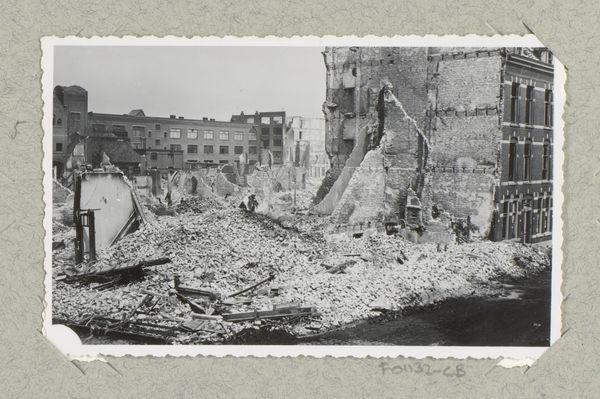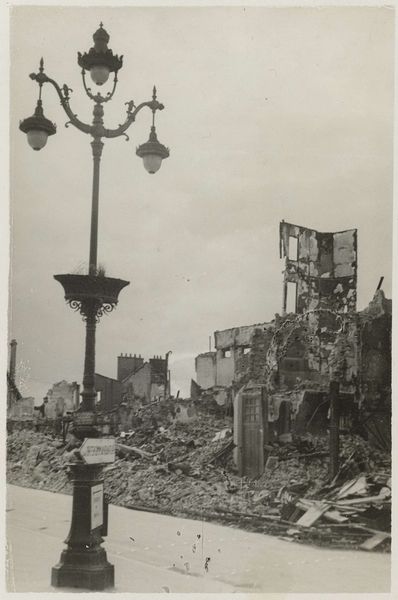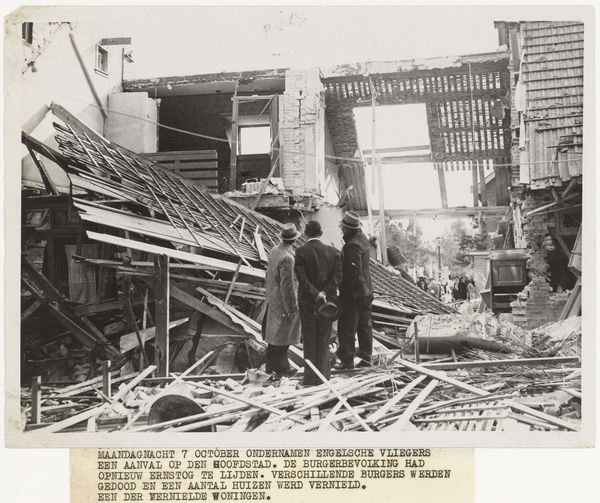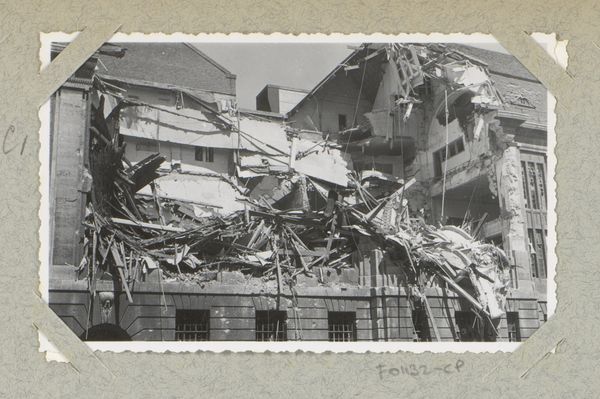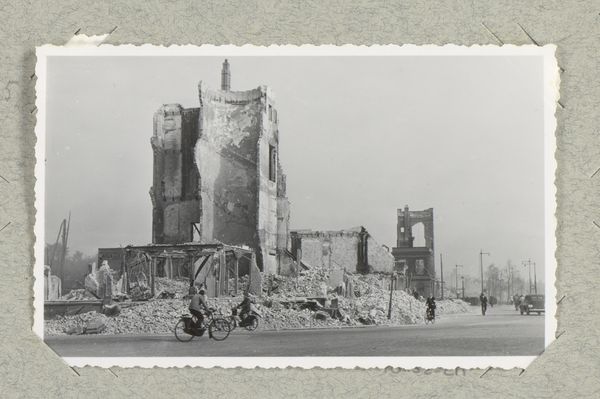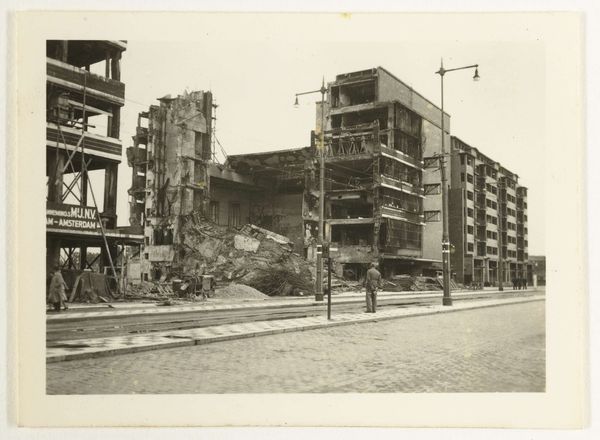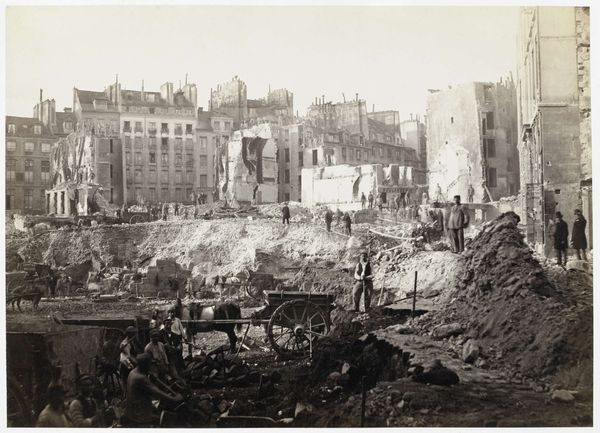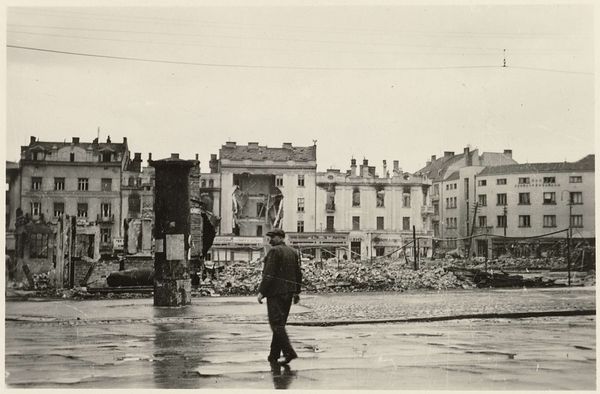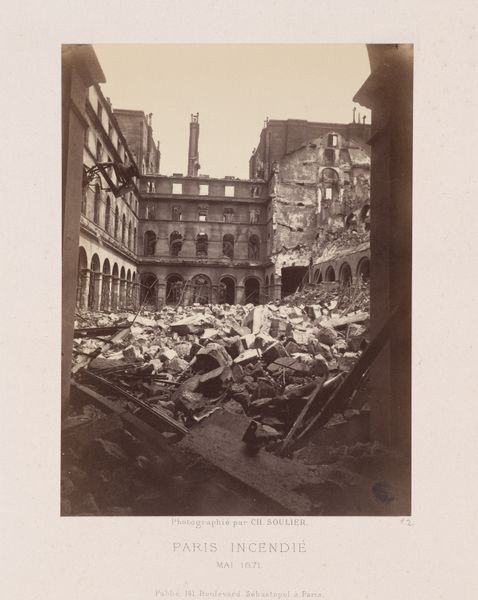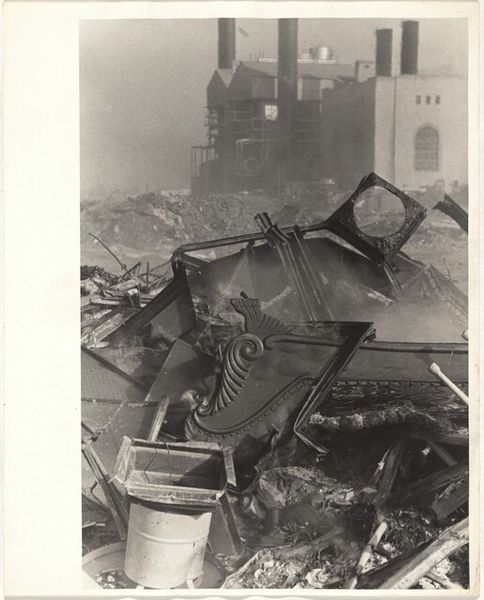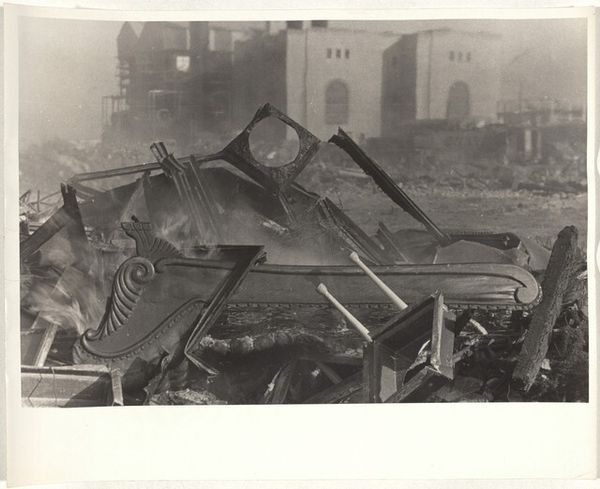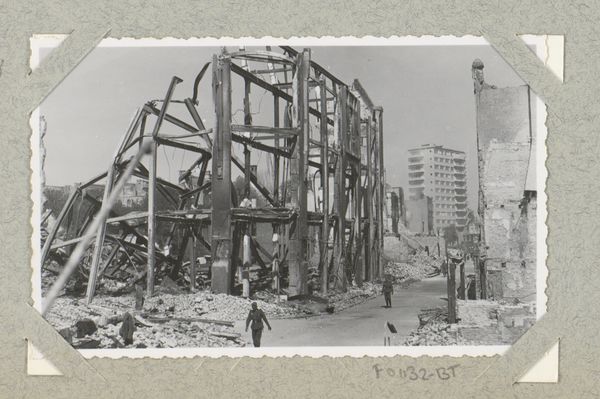
Minister-president Gerbrandy houdt een toespraak ter herdenking aan de Duitse inval op het terrein van de verwoeste Nederlandse kerk 'Austin Friars' te Londen Possibly 1941 - 1945
0:00
0:00
print, photography, gelatin-silver-print
#
portrait
#
print photography
# print
#
landscape
#
archive photography
#
photography
#
culture event photography
#
group-portraits
#
gelatin-silver-print
#
history-painting
#
modernism
#
realism
Dimensions: width 21 cm, height 14.5 cm
Copyright: Rijks Museum: Open Domain
Curator: This photograph, possibly taken between 1941 and 1945 by the Sport & General Press Agency, captures a powerful moment in London: Minister-President Gerbrandy giving a speech. Editor: What strikes me immediately is the setting—this isn't some sterile government building. The speech is delivered amidst absolute ruin, yet everything is sharply focused in this gelatin silver print, down to the texture of the rubble. Curator: Exactly. Gerbrandy is commemorating the German invasion at the site of the destroyed Dutch church, Austin Friars. Look at how the temporary wooden platform is constructed among the wreckage. The image clearly demonstrates that even during war, social memory continues. Editor: It is powerful—literally raising Gerbrandy and the other figures up and above the destruction of war to address this culture event. The rubble itself almost becomes another material element within the scene, a deliberate component that underscores the raw materiality of the conflict and its consequences. Who actually built that stage, and out of what, I wonder? Curator: Absolutely. Consider also the audience, soldiers, civic leaders, the press. This wasn't just about remembrance, but a strategic visual message, leveraging symbolism of Dutch resolve delivered to an international public. The Dutch government was in exile at this point. Editor: It definitely speaks volumes about the relationship between physical space, collective memory, and the ongoing fight for cultural survival. How was this photograph originally circulated and consumed, though? I imagine prints like this shaped public sentiment in Allied countries, emphasizing resilience and shared trauma. Curator: Precisely. Think of the practical considerations too - the availability of materials during wartime. And then, that Dutch flag held high: it’s placement, it’s prominence, and very materially itself constructed under constrained access. This work transcends a mere representation of events; it embodies resilience and deliberate messaging. Editor: Indeed, that connection between a specific moment in history and the tangible elements involved—photography, ruins, carefully staged symbols, shows how power operates through even the humblest, often-overlooked resources available during that time. The ruined church becomes, effectively, a stage, and memory becomes a crucial weapon.
Comments
No comments
Be the first to comment and join the conversation on the ultimate creative platform.
